 This week my world was once again too boring to provide a current event story. But it wasn’t too busy which is the other reason I sometimes use a canned post, as I most recently did on February 19 (Trip Peek # 122 Trip #84 Finding Holland), or recycle an older post, as I most recently did on January 29 (Happy Imbolc Again). So, instead of doing either of those things, I’m going to write about something on this website that I feel doesn’t get enough attention. That might really be saying something since I naturally feel that the entire website doesn’t get enough attention. I’m talking about the clickable collage of thumbnail images from completed trips.
This week my world was once again too boring to provide a current event story. But it wasn’t too busy which is the other reason I sometimes use a canned post, as I most recently did on February 19 (Trip Peek # 122 Trip #84 Finding Holland), or recycle an older post, as I most recently did on January 29 (Happy Imbolc Again). So, instead of doing either of those things, I’m going to write about something on this website that I feel doesn’t get enough attention. That might really be saying something since I naturally feel that the entire website doesn’t get enough attention. I’m talking about the clickable collage of thumbnail images from completed trips.
I’ve had vague ideas about tooting this particular horn in the past but never pursued them very far. I thought of it again this week when I realized I had a little time to write a post but no real-time topic to write about. When that happened, I quickly realized that this was a pretty good time to write about the collage. You see the count of completed trips is currently a multiple of ten and the collage is ten images wide. That means I could produce the image above (which links to the real thing) without the uneven lower edge that it has 90% of the time.
For any that don’t know, this website came into being in 1999 to document a single road trip then hung around to document those that followed. Before long, a chronological list of completed trips appeared with highlights and such and links to the individual journals. This blog was added in 2011 to better support non-road trip postings and allow reader comments.
My 100th road trip occurred just a few months after the blog was started and there was a blog post noting it (The First One Hundred). I had already been selecting a single image from each trip to use in a now-retired feature on the home page and I included a collage of those images in that post. Just a couple of weeks later, the static collage was replaced with a clickable version that has grown as trips are completed and added. Hovering over an individual image will display the sequential number, year, and name of the trip. Clicking it leads to the associated journal.
I get great pleasure from just looking at the collage because each of those images has the potential for triggering tons of memories and together they remind me how much fun I’ve had over the last couple of decades. That will undoubtedly become even more valuable as more years go by. Of course, no one else has those memories to be triggered. I am very much aware of that but hope that others that look over the collage will see something they recognize or something they think interesting and worth a further look. There are 170 trips represented there now and it continues to grow slowly. I encourage you to take a look by clicking the opening image.
In addition to that 100th trip post where the collage first appeared, it was also mentioned a few years ago in a post on Some Subtle Stuff. A look at that might be worthwhile if that sort of thing interests you.

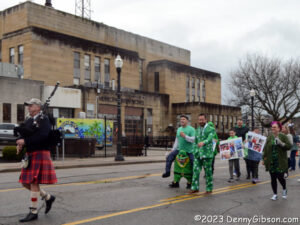
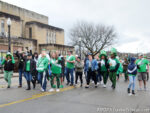
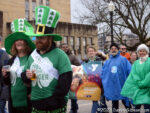
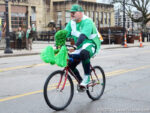
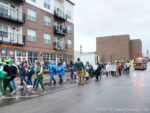
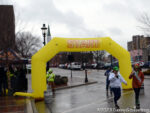
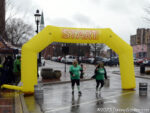
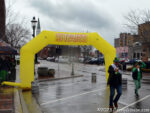
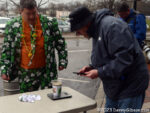

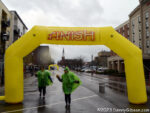
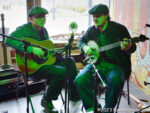
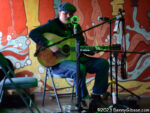

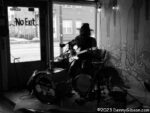

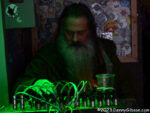
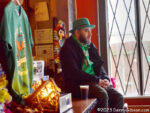
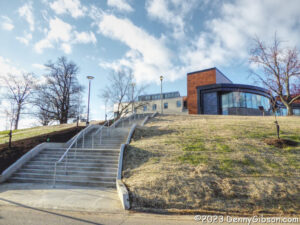




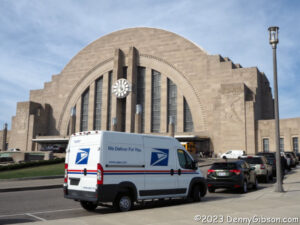

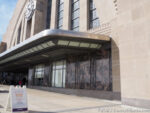

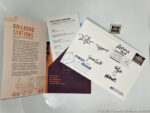
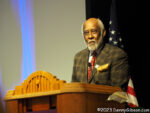

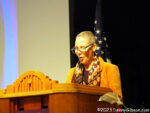
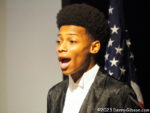
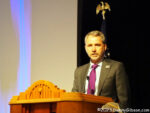
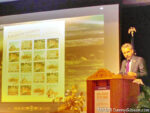
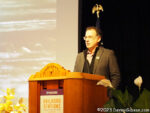
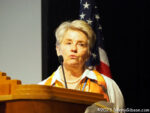
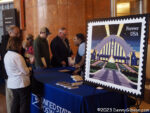
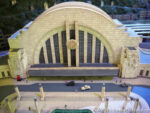
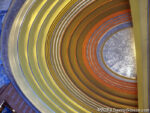

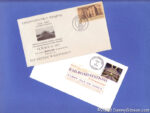
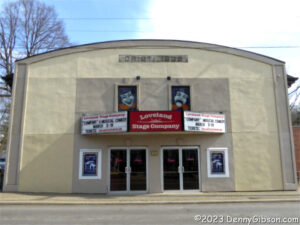
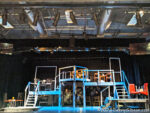
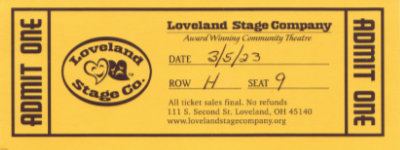 Loveland Stage Company was founded in 1979. I lived inside Loveland city limits from about 1981 to 1997. I visited the town frequently before I physically moved there and visit even more frequently now that I’ve moved a few miles away. I have driven by the LSC theater perhaps hundreds of times. I have seen many interesting titles displayed on that marquee. That I’d not previously been inside is both inexplicable and inexcusable. The performance I saw Sunday compares favorably with some I’ve seen in downtown Cincinnati. Walkable restaurants around LSC also compare favorably with those around the downtown theaters and the parking is cheaper. There’s some Shakespeare (Twelfth Night) coming up at LSC in a couple of months which I hope to catch. I’m also quite curious about what next season will bring.
Loveland Stage Company was founded in 1979. I lived inside Loveland city limits from about 1981 to 1997. I visited the town frequently before I physically moved there and visit even more frequently now that I’ve moved a few miles away. I have driven by the LSC theater perhaps hundreds of times. I have seen many interesting titles displayed on that marquee. That I’d not previously been inside is both inexplicable and inexcusable. The performance I saw Sunday compares favorably with some I’ve seen in downtown Cincinnati. Walkable restaurants around LSC also compare favorably with those around the downtown theaters and the parking is cheaper. There’s some Shakespeare (Twelfth Night) coming up at LSC in a couple of months which I hope to catch. I’m also quite curious about what next season will bring.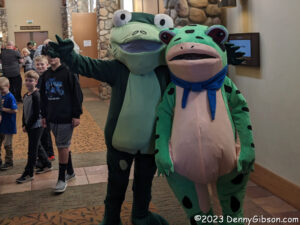
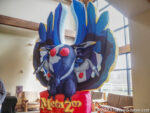
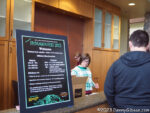
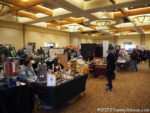

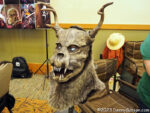
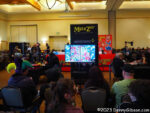
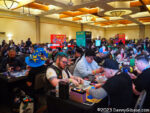

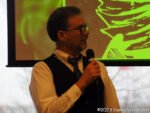
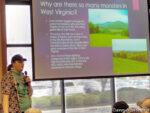
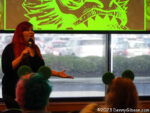
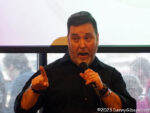
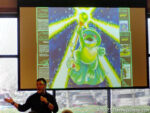
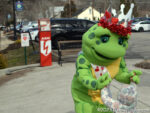
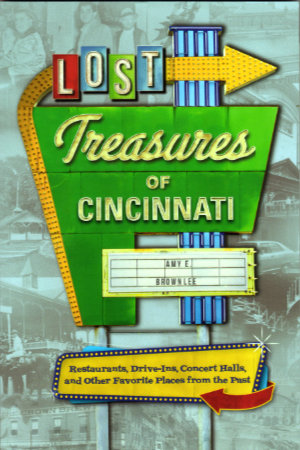 Amy E. Brownlee is a lifelong Cincinnatian. She naturally learned a lot about the city growing up here then used that knowledge and added much more during her ten years at Cincinnati Magazine. An awful lot of the treasures she writes about in Lost Treasures of Cincinnati were lost before she arrived but a rather frightening number have disappeared during her lifetime. Of course, an even larger number have disappeared during mine. Neither of us is responsible for that. I swear it’s coincidence pure and simple.
Amy E. Brownlee is a lifelong Cincinnatian. She naturally learned a lot about the city growing up here then used that knowledge and added much more during her ten years at Cincinnati Magazine. An awful lot of the treasures she writes about in Lost Treasures of Cincinnati were lost before she arrived but a rather frightening number have disappeared during her lifetime. Of course, an even larger number have disappeared during mine. Neither of us is responsible for that. I swear it’s coincidence pure and simple.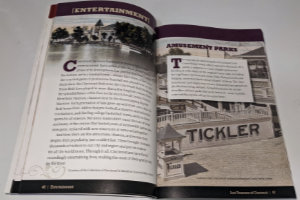 The book opens with “Food and Drink” in Section 1 then covers “Entertainment” and “Retail” in the next two sections. The smallest section, “Media”, is followed by the largest, “Community”. Definitions for those section titles are not particularly rigid and the size of the “Community” section probably indicates that it is the least rigid of all. It is where things like churches and breweries, of which Cincinnati had more than a few, appear.
The book opens with “Food and Drink” in Section 1 then covers “Entertainment” and “Retail” in the next two sections. The smallest section, “Media”, is followed by the largest, “Community”. Definitions for those section titles are not particularly rigid and the size of the “Community” section probably indicates that it is the least rigid of all. It is where things like churches and breweries, of which Cincinnati had more than a few, appear.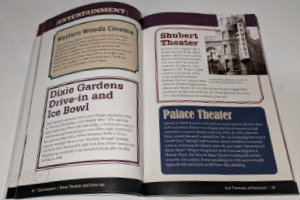 Most, but not quite all, of the breweries mentioned in the book were gone before I got here. Likewise with restaurants and attractions which together comprise the biggest part of things that have disappeared during my lifetime. I caught one show, Hair, at the Shubert (“Entertainment”) before it was torn down. I also saw one movie at the Albee (“Entertainment”) but I don’t remember what it was. I had one meal each at The Gourmet Room and the Maisonette (“Food and Drink”) before they closed. There are quite a few places in this book where I ate one or more meals or watched one or more movies, plays, games, or concerts. Encountering each of them on these pages prompted memories that went way beyond the single paragraph of text. Reading about places that were already gone when I came to Cincinnati didn’t prompt any memories, of course, but it did make me appreciate just how many treasures have been lost.
Most, but not quite all, of the breweries mentioned in the book were gone before I got here. Likewise with restaurants and attractions which together comprise the biggest part of things that have disappeared during my lifetime. I caught one show, Hair, at the Shubert (“Entertainment”) before it was torn down. I also saw one movie at the Albee (“Entertainment”) but I don’t remember what it was. I had one meal each at The Gourmet Room and the Maisonette (“Food and Drink”) before they closed. There are quite a few places in this book where I ate one or more meals or watched one or more movies, plays, games, or concerts. Encountering each of them on these pages prompted memories that went way beyond the single paragraph of text. Reading about places that were already gone when I came to Cincinnati didn’t prompt any memories, of course, but it did make me appreciate just how many treasures have been lost.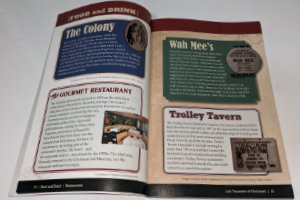 I really enjoyed reading Lost Treasures of Cincinnati cover-to-cover front-to-back but as I did, two other ways of reading the book came to mind. With its fairly short standalone essays, it seems like a natural fit for that popular personal reading room with the porcelain furniture. Its use as a reference book also seems rather natural. I don’t mean an every-last-detail reference book to use in conducting deep-dive research but a great place to answer questions like “What was the name of that boat-shaped restaurant?” or “What happened to our NBA team?”. The full index will help the book play that role.
I really enjoyed reading Lost Treasures of Cincinnati cover-to-cover front-to-back but as I did, two other ways of reading the book came to mind. With its fairly short standalone essays, it seems like a natural fit for that popular personal reading room with the porcelain furniture. Its use as a reference book also seems rather natural. I don’t mean an every-last-detail reference book to use in conducting deep-dive research but a great place to answer questions like “What was the name of that boat-shaped restaurant?” or “What happened to our NBA team?”. The full index will help the book play that role.